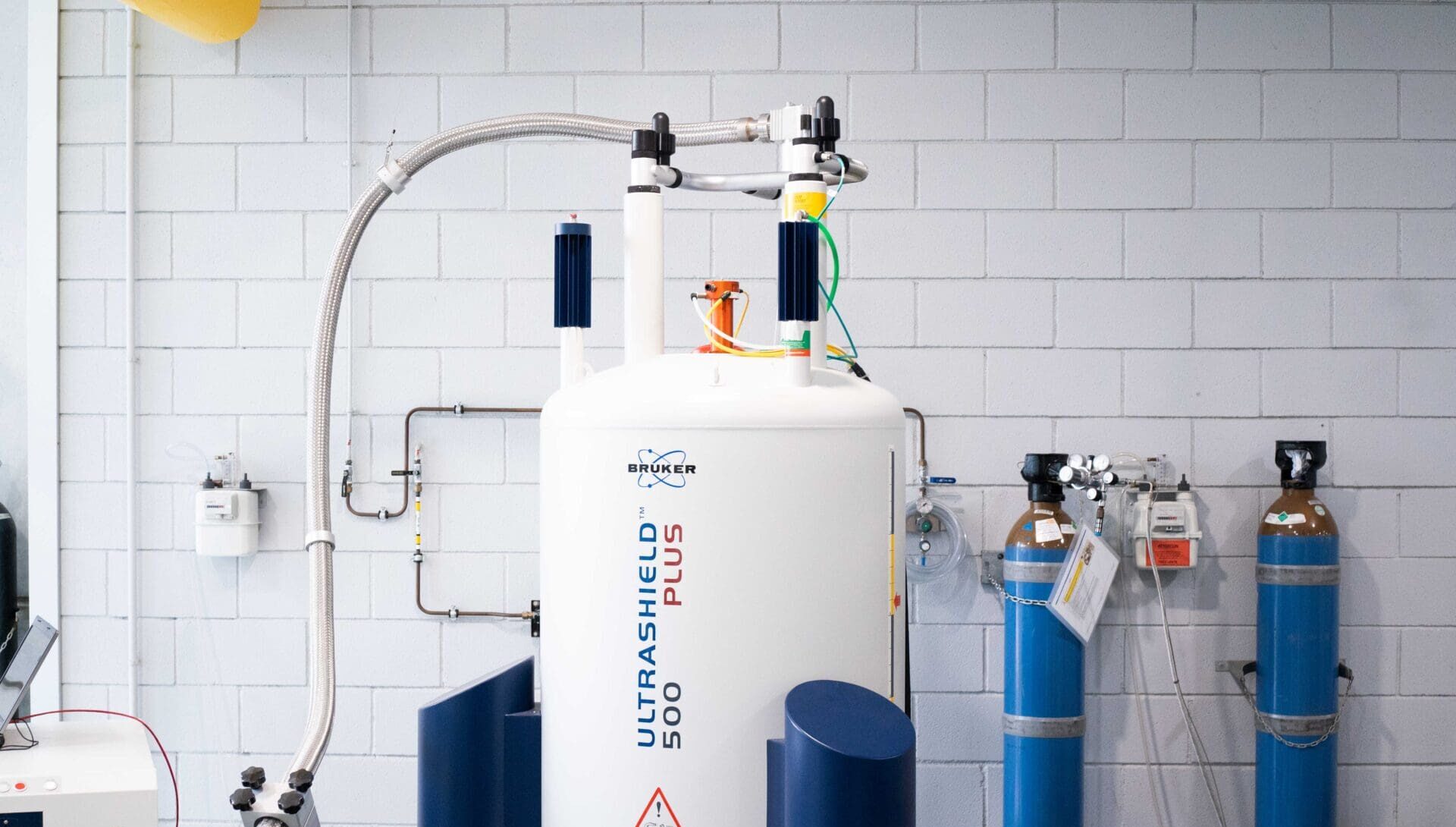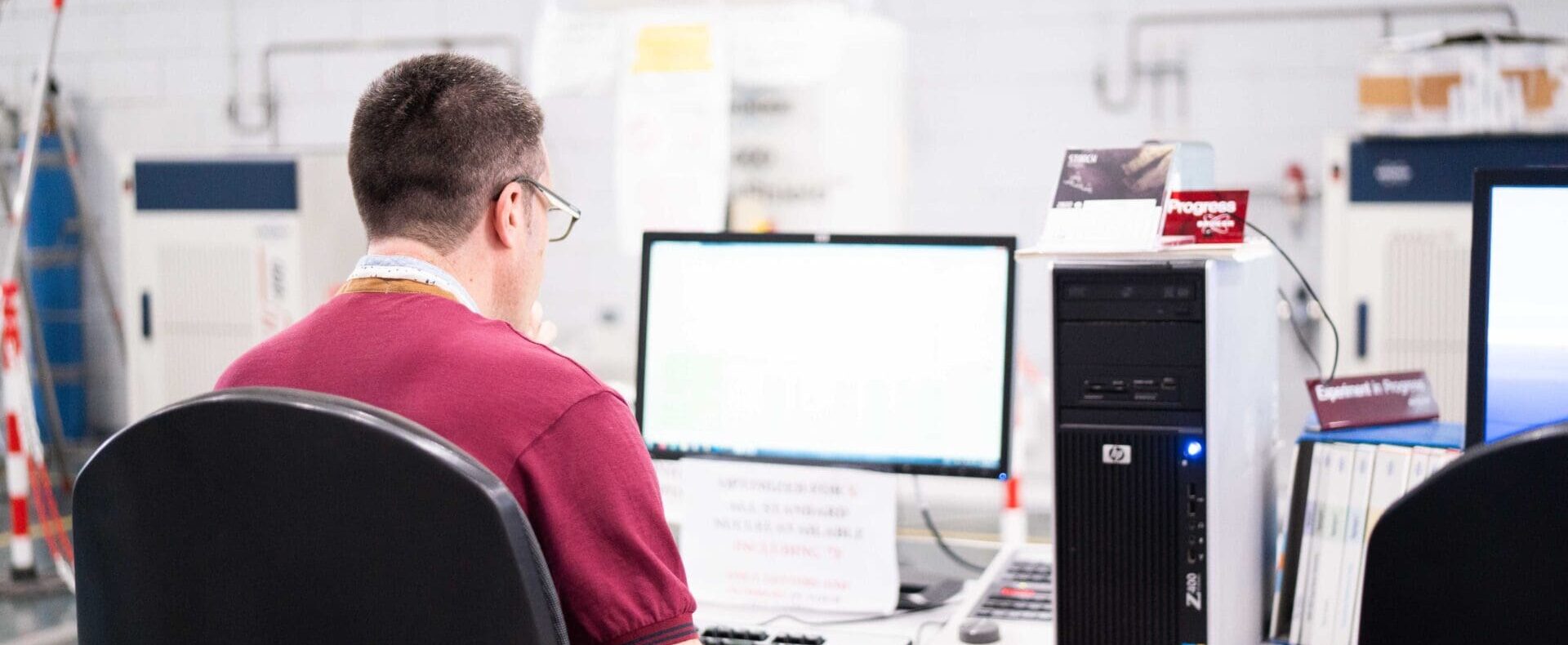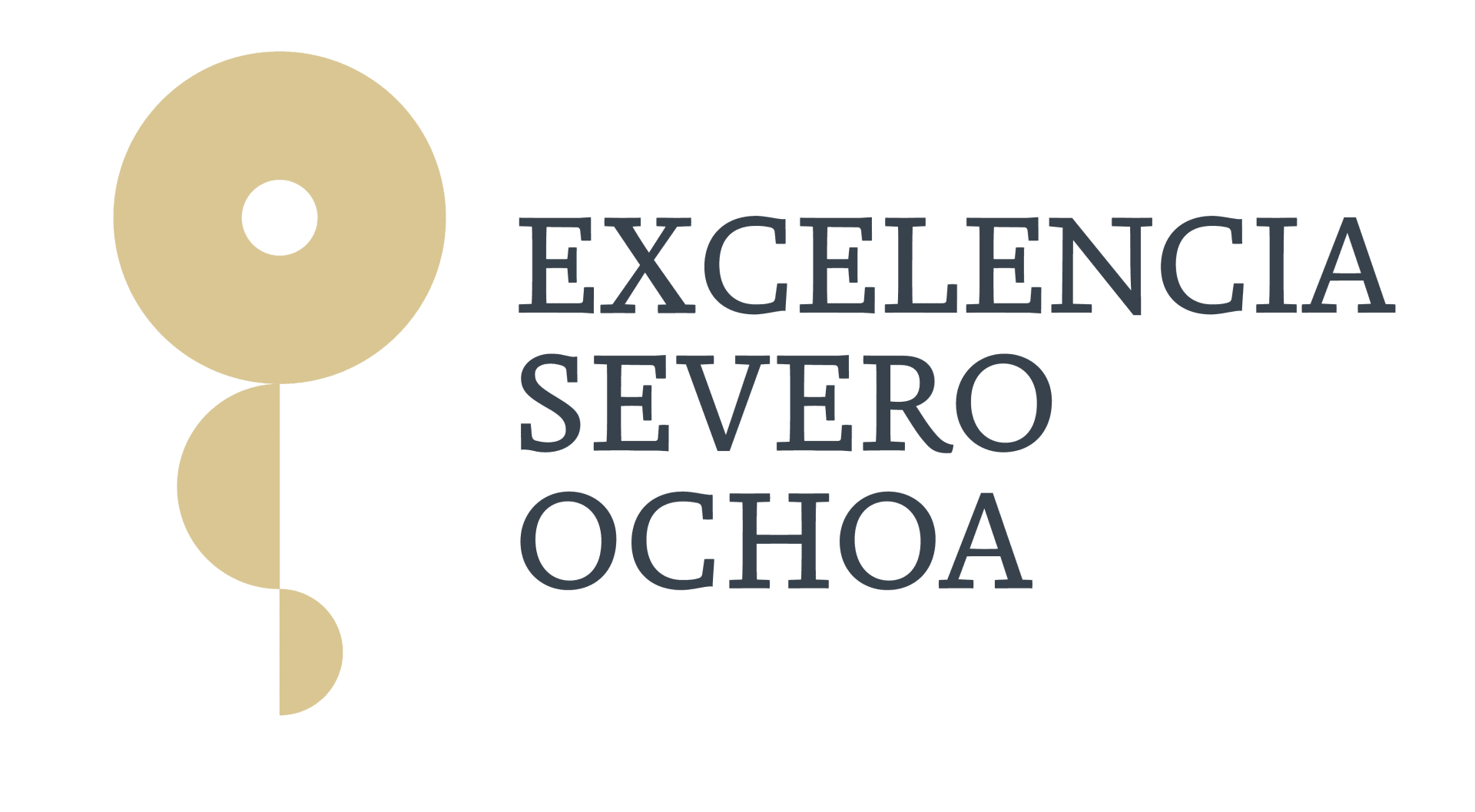Nuclear Magnetic Resonance
The Nuclear Magnetic Resonance (NMR) Unit offers researchers access to a diverse array of NMR experiments, available in both automated and manual modes
About
The Nuclear Magnetic Resonance (NMR) Unit provides researchers with access to a wide range of NMR experiments both under automation or manual mode.
It also advises researchers on the most appropriate experiment to their needs and it trains and instructs researchers in using NMR, what information can be obtained from NMR experiments and how to optimize the instrumental resources available.
The techniques available up to now guarantee access to all kinds of NMR experiments in liquid phase for a wide range of nuclei and in gel phase for the more common nuclei (1H and 13C). The NMR unit has successfully introduced researchers to such uncommon techniques as heteronuclear (mono and bidimensional) experiments, diffusion experiments and kinetic measurements.
The unit staff also organizes training activities which range from training new users in obtaining NMR spectra automatically and how to use NMR processing software (TOPSPIN), to more general courses about the NMR experiments available and the information they can provide.
This unit has received funding from Ministerio de Ciencia, Innovación y Universidades, Agencia Estatal de Investigación, FEDER (EQC2018-004783-P) and Severo Ochoa (CEX2019-000925-S, MCIN/AEI//10.13039/501100011033).
![]()
Equipment
-
Bruker Avance 400 Ultrashield NMR spectrometer
Equipped with BBFO Plus (Broadband Observe plus 19F), BBO (Broadband Observe) and SEF (Selective for 19F) probes, all of them with ATM and z-gradients. This instrument also has a BACS-120 auto sampler for 120 samples.
-
Bruker AVANCE NEO 500 MHz Spectrometer

Equipped with BBI (Broadband Inverse) and BBO (Broadband Observe) probes, both of them with ATM and z-gradients. Additionally it has an HR-MAS probe for gel-phase samples and TBO (Triple Broadband Observe) and TXI (1H-31P-103Rh) probes in combination with a third channel. This instrument also has a BACS-60 auto sampler for 60 samples.
-
Bruker Avance II 400 Ultrashield NMR spectrometer

Equipped with BBFO Plus (Broadband Observe plus 19F) and BBI (Broadband Inverse) probes, both of them with ATM and z-gradients. This instrument also has a BACS-60 auto sampler for 60 samples.
-
Bruker Avance III 500 Ultrashield Plus NMR spectrometer

Equipped with a QNP cryoprobe (1H, 13C, 31P i 19F) with ATM, in combination with a cryoplatform which allows recycling of the magnet’s liquid nitrogen.
-
Bruker AVANCE NEO 300 MHz Spectrometer

Equipped with a BBO (Broadband Observe) probe with ATM and z-gradients. This instrument also has a SampleXpress autosampler for 60 samples.
Other research units

Let's create a brighter future
Join our team to work with renowned researchers, tackle groundbreaking
projects and contribute to meaningful scientific advancements





























